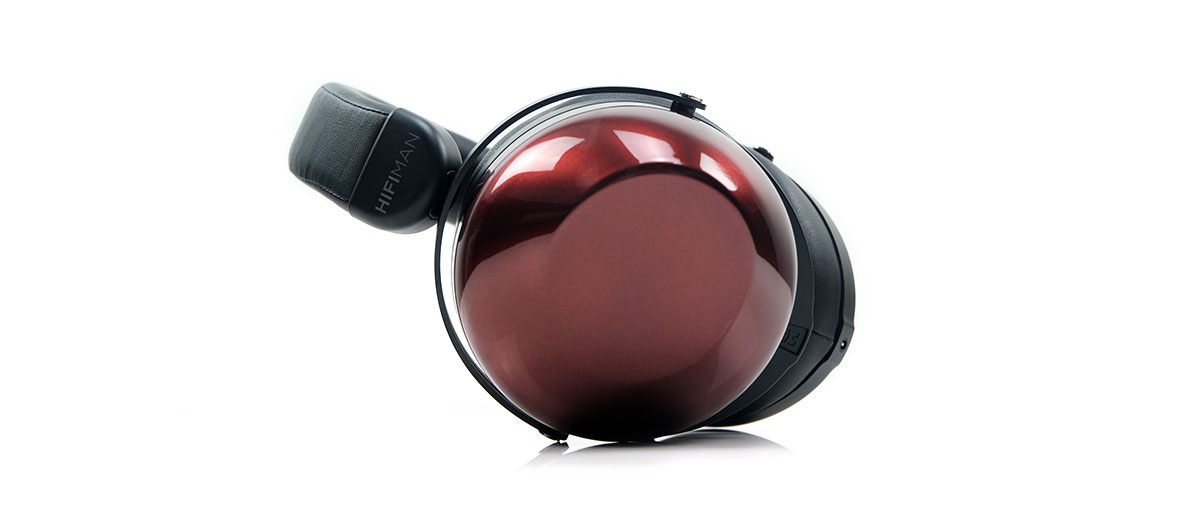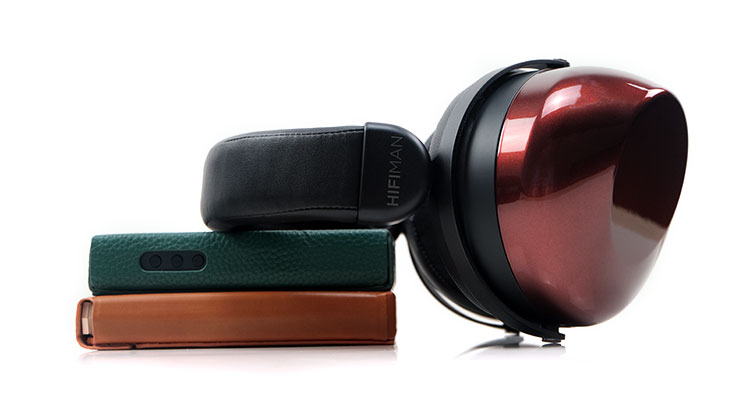Sound Impressions
Summary
The HE-R9 is like nothing I have ever heard before in a HIFIMAN headphone. This is a bassy, warm, and forgiving-sounding performance and a far cry from the clean, punchy, and airier tuning of its bigger sibling, the HE-R10D.
Perhaps, HIFIMAN alluded to an appreciation of weightier sound signatures with the launch of the Edition XS and the Arya Stealth Magnet Edition previously. These were two planar headphones that produced a much more substantial bass presence than previous generations.
Still, even with that, the HE-R9 will carry the crown in the product range for being the most colored and rich-sounding headphone to date and one which any R’n’B and modern pop fan should probably demo first in the range.
Is it reference level? No, definitely not, but is certainly a lot of ‘fun’ for want of a better phrase, and not a headphone that requires a huge amount of power to perform.
It will tighten up, however, with good quality amping and, as you will find in our synergy section, I had a distinct preference for a clean and punchy solid-state sound signature pairing.
Frequency Response
The presentation has somewhat of a V-shaped response with the low end of the HE-R9 showing a distinct sub-bass to mid-bass bias up to 100Hz and slightly beyond.
From there I am picking up on a bit of a drop into the mids as you would expect with this type of tuning to prevent too much bass bleed though there is a bit of closed-cup bloom in the upper bass.
Lower-mids and mids in general do not have a huge amount of head gain so they do sit back a bit in the mix in comparison to the low-end presentation. Chest and rock male vocals are not hugely forward and will play second fiddle to heavier fundamentals from lower pitching kick drums and bass synth notes.
Upper mids are further forward creating a more intimate effect and benefitting primarily female or head voice vocal mixes, particularly with modern pop recordings with their more spartan midrange mixing. I suspect there is a bit of a bump around 2-3k similar to the HE-R10D voicing to achieve that.
Upper mids to lower treble tuning seems to be more on the muted side with a secondary bump around 7-8k that keeps the tone from becoming overly rounded.
Paired with clean sound signatures such as the FiiO M17 you can pick up some odd-harmonic influences in upper mids percussion riffs that add a little bit of sweetness and snap to the tone but it’s still quite liquid and smooth sounding overall.
Timbre
Bold, creamy, and liquid-like in its coloration, the HE-R9 timbre is going to come across as euphonic, even-harmonic-biased, and forgiving in nature.
The fundamental is very dominant in the HE-9 pairing so bass is very much to the fore as is the lower order of the headphone’s harmonic balance up to the mids. You will get plenty of rumble and a fairly dense mid-bass punch along with it.
Surprisingly, mids from 1k onwards are not overly smeared nor too dense sounding despite the obvious richness permeating from every note. There is just enough of a treble influence and some 2-3k elevation to give matching vocal ranges a bit of focus and presence.
Higher pitching soprano female vocals and whistle notes in particular benefit from this slight lift. They sound very smooth and euphonic, perhaps not Harman Target levels but clear and forward enough to rise beyond the bass power and presence. Sibilance is not a thing with the HE-R9’s tuning.
Now you can tweak that slightly with your pairings and I do suggest grabbing a cooler-toned quality DAP or solid-state amplifier to keep any excessive warmth in check.
With some pairings such as the Questyle M12 which has less than 100mW in output power, it can sound fairly soft and bloomy. Once you up the power to something like the clean and dynamic performance of the 600mW Chord Electronics Mojo 2 the presentation tightens up with some of that warmth being trimmed down and better treble extension.
Staging
Coming from the HE-R10D the HE-R9 staging is more on the intimate side with a stronger focus on the low-end up to around 200Hz and midrange female or higher pitching vocals around 2-3k.
Of the two, the HE-R9 has much better depth and power but does not sound as airy nor offers the same level of treble headroom. However, compared to some other competing closed-back headphones such as the Drop Panada, this has a much bigger soundstage, at least on a macro level.
A well-powered desktop headphone amplifier will dig the deepest whilst keeping the potential for bloom in the upper bass as low as possible. It does not have to be a super expensive option either with the FiiO K9 Pro ESS producing a very snappy and dynamic sounding bass response.
A good amp will also push out the stereo imaging and improve the channel and instrumental separation considerably. Weaker sources tended to deliver a much looser bloomier low-end sounding relatively congested in the upper bass and lower mids as a result.
Bluemini R2R
I was impressed by the amount of power the Bluemini R2R delivered via BT. Volume had to be dropped considerably on our test FiiO M17 DAP or it would have blown my ears to pieces.
The dynamic range using LDAC was acceptable also though it does not quite have the same holographic performance of the wired alternative sounding a little narrower and with slightly less headroom and separation also.
The tuning was also smoother and more analog sounding though given its R2R topology I was not terribly surprised. Compared to a solid-state delta-sigma pairing the bass just drops a little in terms of weight and control with a longer decay characteristic.
Male vocals are a little warmer and more rounded and still struggle to be heard over the cacophony of any busy instrumental passages. However, higher-pitching vocals sound euphonic and intoxicating, particularly soprano vocals.
Synergy
Efficiency
The HIFIMAN HE-R9 is rated at 32Ω and 100dB SPL so not hard to drive, even from portable sources. Side by side, I found the R9 to be a little bit more efficient than its bigger sibling, the HE-R10D despite it being rated as more sensitive at 103dB.
I have to say I was impressed also with the power of the Bluemini R2R pairing. Typically, I would expect a diminution and some adjustment upwards volume-wise from the transmitting source but in this case, I found myself often turning the volume down considerably compared to some competing wireless pairings.
Options such as the FiiO M17 BT pairing and a Samsung Z Flip 3 required maybe half or two-thirds less volume compared to the average TWS volume setting in Bluetooth mode.
Dongle Pairings
I tested 4 dongle pairings with the HE-R9 including the Cayin RU6, Lotoo’s PAW S1, the LP W2, and the Questyle M12.
Whilst I had no complaints about the volume, some of the devices produced a slightly soft-sounding performance. Of the 4, the cleaner-sounding dongles got my vote
It is a pity the R9 only comes with an SE cable because these dongles shine a lot better going balanced with the additional power, tighter bass, and improved instrumental separation.
If you plan on going balanced I would give an edge to the W2 for the level of clarity and its cleaner sound which offsets the warmth of the HE-R9 to produce a slightly more accurate timbre. Its 230mW capability also far outclasses the Questyle M12 and the Lotoo PAW S1 offering a better level of dynamic range or ‘snap’ in the bass response of the HE-R9.
The Cayin RU6 has similar levels of power to the W2 at 213mW so it’s competitive for delivering satisfying levels of headroom and power.
It contrasts a bit from the W2 pairing though delivering a smoother more euphonic tone compared to the cleaner sound signature of the W2. Also, I prefer the RU6’s deeper staging quality and richer vocals even if the W2 is the better treble performer.
DAP Pairings
I much preferred clean and punchy over smooth and creamy when it came to DAP synergy with the HE-R9. A good solid-state amp setup with decent power such as the THX implementation inside the FiiO M17 and to a lesser extent the DX240 with AMP8 MKII gave me a very clean and much more precise sound than the weaker dongles.
The DX240 is more neutral to my ear though so if I have to pick between the two the stronger and punchier M17 would be my go-to choice. The sub-bass reach and presence from the M17 pairing are more convincing to me. Both DAPs do very well for mids clarity and treble extension which is where I wanted my source to focus on with this pairing.
Smooth and warmer DAPs such as the HiBy RS6 do have their charm, particularly with vocal timbre sounding very rich and fulsome. However, the imaging was a little claustrophobic and the RS6 does tend to deliver plenty of weight behind.
That gives the HE-R9 presentation and bit too much body and not enough lateral space with your ear being dragged down to more bass bloom and vocal forwardness than I would like.
Desktop Pairings
On the affordable side, the FiiO K9 Pro ESS was an excellent pairing. Given my satisfaction with the M17 performance with the HE-R9, there should be no surprise since the K9 Pro ESS uses pretty much the same amplifier with a very similar tuning.
The HE-R9 pairing’s dynamic range was strong, the bass reached deep and sounded fairly tight. The timbre is a shade cooler but that’s my personal preference as the HE-R9’s stock tuning errs to the warm side so in effect it thins it out a touch and creates a bit more headroom and space for instruments and vocals to shine.
On the high fidelity side of things, the HE-R9 does show a level of scaling capability much like its bigger sibling the HE-R10D.
In some ways, that statement is also reflected in the 1W of SE output power of the K9 Pro ESS. However, slip it into the XI Audio Formula S’s 2.1 watts SE output and you get an even more expansive soundstage, particularly in terms of channel separation and staging width.
The improved power output also seems to have a better grip on the HE-R9 bass response though I find this pairing a little lighter for pure slam compared to something like the Ferrum ERCO. The ERCO pairing was incredibly visceral on the low end though lacked the airiness and headroom compared to the Formula S.




